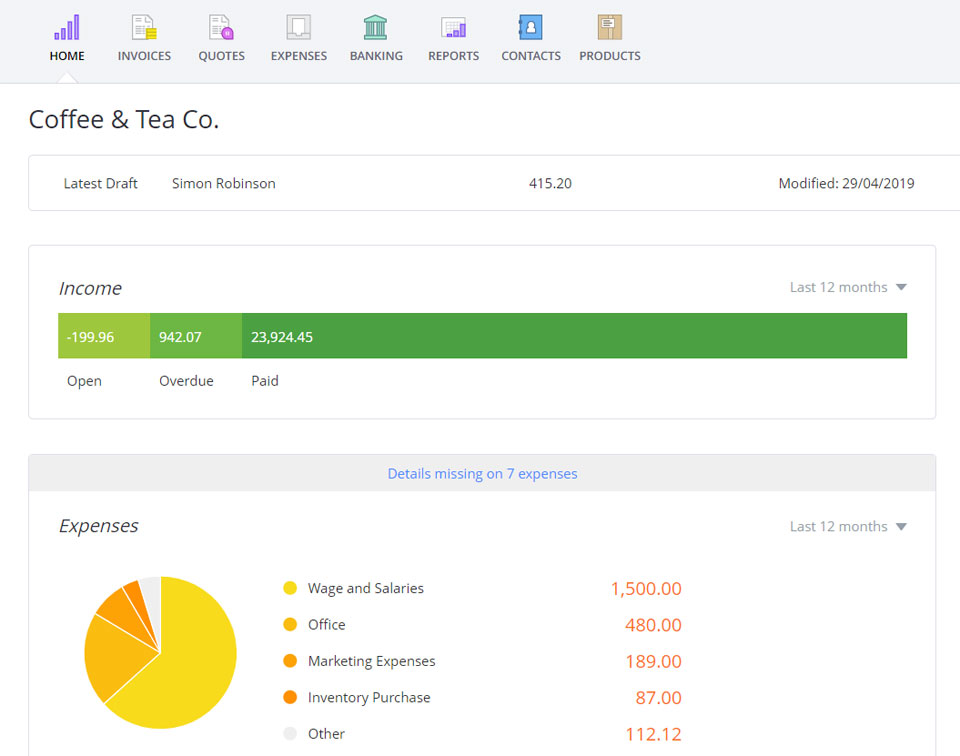When you run a small business, it can be easy to get caught up in the day-to-day, in your work itself, and in building the business relationships that will help your business develop. It’s not uncommon to open that paper drawer at the end of the week (or month) and find all those receipts for business expenses as well as an email inbox full of replies from customers and notifications of payment.
While incoming cash flow is definitely preferred, keeping track of outgoing cash flow is of course, equally important. Understanding a balance between the two is an important yet easy way to maintain an idea of the financial health of your business.

Aside from keeping tedious accounting records, is there a way to do this easily, even in an age where we’re increasingly mobile for work and often take our tasks to go? As with most things today - there’s an app for that (Android or iOS)! But also an online browser version that syncs with your mobile while you’re on the go.
Keep track of income
Cash flow means both incoming and outgoing. But let’s focus first on the one that is more than likely the one you prefer to see: income. While traditionally, incoming cash flow stems from payments for products or services provided to your customers, there are other sources of income.
For example, you might receive a tax refund, amounts made in interest, or on capital gains, for example. No matter where your income comes from, and whether it can be matched to an invoice, it does need to be recorded in your business financial records.
With the right accounting & invoicing software, recording other income can be as simple as entering payment on an invoice, and be applied automatically to your profit & loss report/income statement.
Register business expenses
Then there’s the other side of running a business. The outgoing cash flow. Arguably the type that does not necessarily result in feelings of happiness and accomplishment (unless...new computer? New working space?).
No matter what the reason for the expense (or your feelings about it), it’s necessary to keep track of where this money is going and when it occurs. Of course, for both incoming and outgoing cash flow, depending on whether you’re using cash accounting or accrual accounting, you’ll still need to register these amounts - they just show up in different periods in your financial reports.
With online software it can be simple to record an expense, instead of carrying around receipts, and eventually stashing them away in a drawer to be dealt with at a later date. Online accounting software like Debitoor gives you the option to simply snap a picture of your receipt. OCR technology then automatically fills in the important details and it’s saved to your account, accessed anywhere.
You can then enter payments on the expense according to your accounting method. You’ll then be able to see payments on expenses in your reports, as well as by category and VAT amounts for specified periods, if applicable.
View your business finances at a glance
While it’s one thing to be able to record your cash flow, it’s another to be able to understand it as it pertains to your business finances. While looking at your profit & loss certainly provides a helpful detailed view, online software should also offer a visual representation.

Dashboard graphs
In Debitoor, your account features a set of customisable dashboard graphs on your homescreen when you sign in. This allows you to view information about both your income and expenses, including a comparison of the two, over set periods that you can select.
These graphs allow you to quickly understand trends in your cash flow, both incoming & outgoing. You will also see some helpful graphs in the mobile app, allowing you to see your business finances even on the go.
Financial reports
Of course, the best way to gain a thorough understanding of your cash flow is by viewing the financial reports of your business. Debitoor makes it easy to generate a profit & loss report for any period you select, comparing it to your year-to-date as well as to your previous year.
You can also view a balance sheet, as well as preview your VAT report. In the UK, if you’ve signed up and been confirmed for Making Tax Digital, you can use Debitoor to directly submit your VAT returns online to HMRC.
